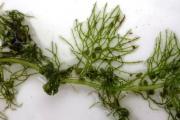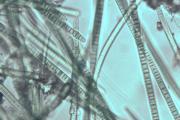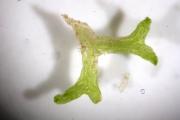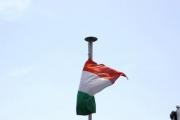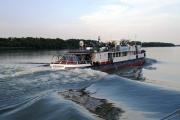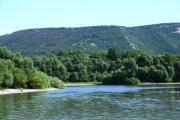
On August 24, sampling meant officially crossing the border between Slovakia and Hungary at Komarno/Komarom. During the day, Stations 20, 21 and 22 were sampled. For the first time, the water fern Ricciocarpos, a red-listed endangered species, was found by macrophyte specialist Brigitte Schmidt.
On August 25, the day started in Esztergom, Hungary and ended with the smooth completion of four stations having been sampled, two of which were at the mouths of the Danube tributaries, the Hron and Ipel. At the same time, work on board the Argus suffered from technical problems. The centrifuge for microbiological analyses went on strike and an elevated content of solid particles and plants in the Danube waters clogged the device for on-line Radon measurement in water. Arrangements were made to fix both problems on Monday.
"The preliminary analyses of phytobenthos (small plants attached to the stones in the river) in the upper Danube indicates the usual occurrence of these species," says Slovakia's Jarmila Makovinska, the JDS2 Core Team's phytobenthos expert. "The blue-green algae together with the green algae and diatoms were found in most of the stations until now."
Meat-eating plants in the Danube!!!
Analyses of the macrophyte samples taken yesterday revealed the surprising presence of a meat-eating plant in Danube waters. Utricularia, a carnivorous plant with yellow dragon-like flowers, loves the backwaters where it hides in the still waters hunting for small creatures such as Daphnia and other small cancers and algae with its vacuum traps. In Hungary, Utricularia is a critically endangered species on the Red List. In Slovakia, it had not been officially detected in the Danube until now. So the Slovak National Team (including Livia Tothova and Matus Haviar) and the JDS2's Brigitte Schmidt wished Utricularia "Bon appetite in the Danube!"












